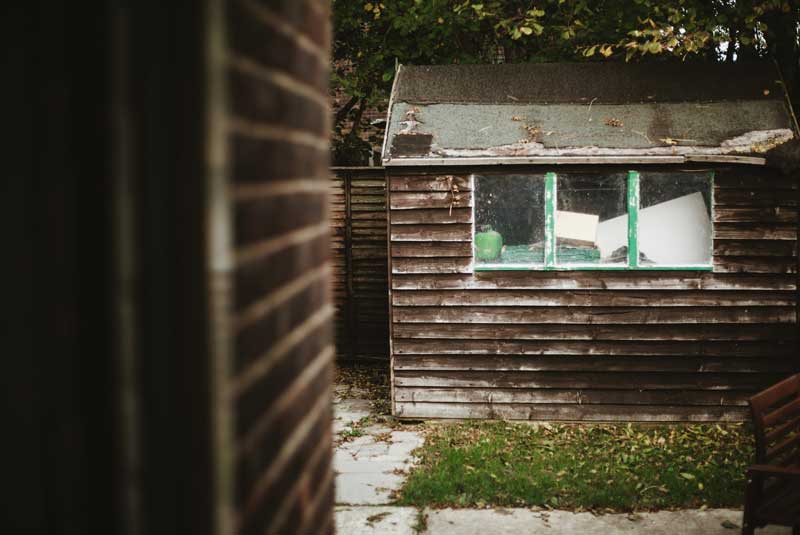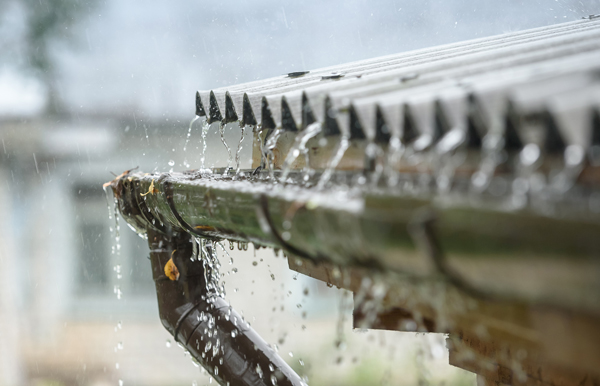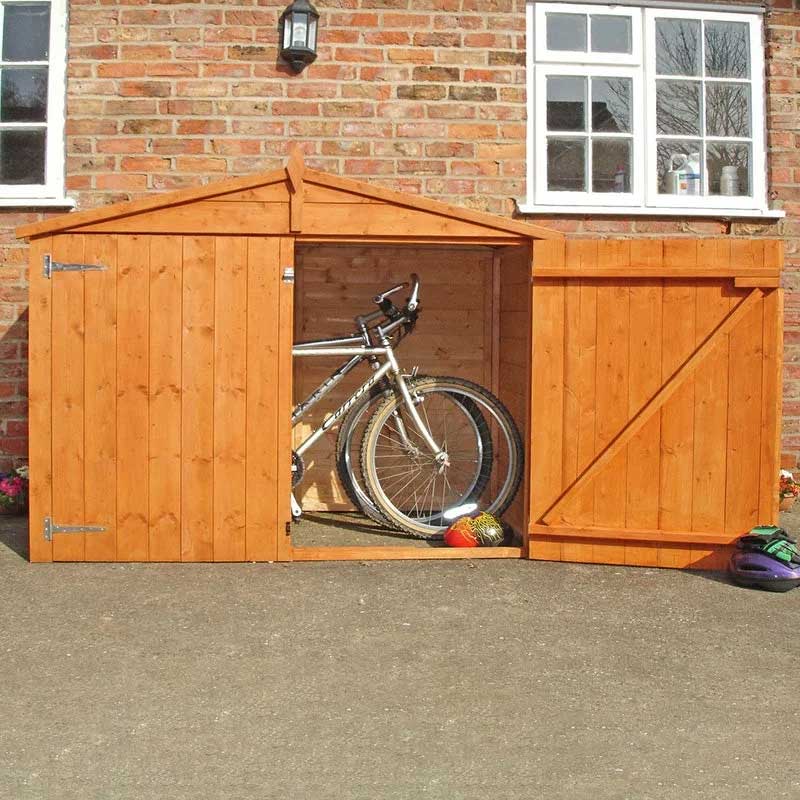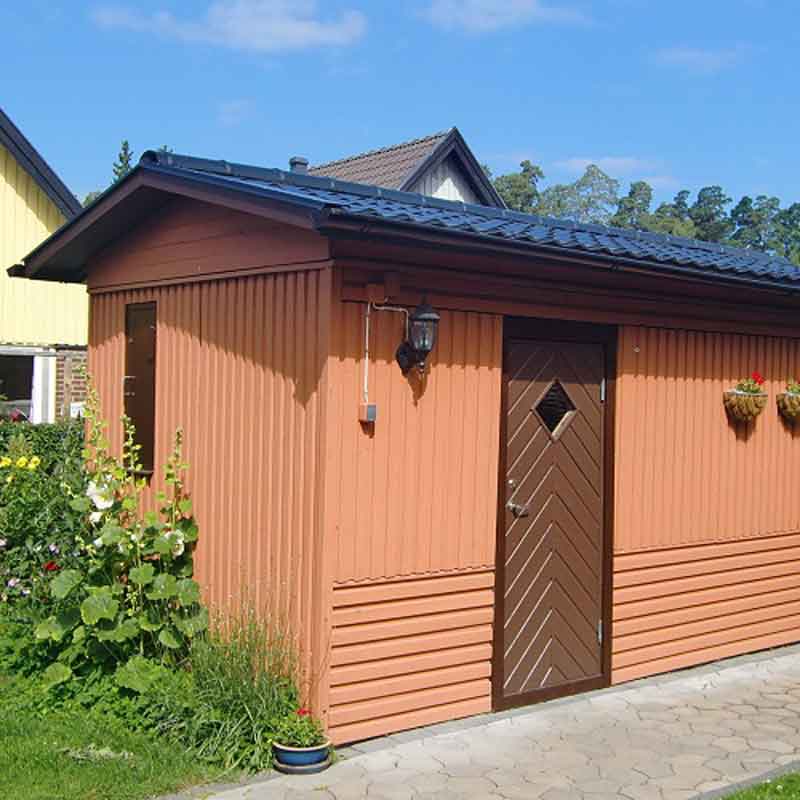Your shed needs some TLC after its years of use; especially if you’re using it to contain valuable items or equipment. So how do you maintain the shed so that it continues to perform as intended, even in different weather conditions? What can you do to keep your belongings safe? Here are some handy tips to give you an idea of how to keep your shed in good condition for years to come!
Table of contents
- Inspect the roof regularly
- Install guttering to prevent water ingress
- Keep your guttering clean, clear and fixed
- Keep the exterior space clear
- Organise your shed space
- Take inventory of items in your shed
- Maintain security points on your shed
- Use a wood preservative
- Paint/repaint the shed if desired
- Wash the exterior of the shed at least once a year
Inspect the roof regularly
The roof is going to take the brunt of the weather. Rain, snow, sun, hail, you name it, the roof will suffer under certain conditions. As such, you need to make sure that you inspect the roof regularly for any holes, tears, leaks or debris. Failing to do so can result in damage to the shed and the items within it.
If your shed has roof felt, we can help you speed up those repairs with our shed roof felt kit. It has all the essentials you need to ensure your shed roof is fixed as soon as possible.

Install guttering to prevent water ingress
Guttering can help water direct away from the building. If you want an eco-friendlier way to obtain water for your garden, you can also install a water butt to catch that water and use it as needed.
Visit our guide about ‘How to install guttering on a shed roof’ for a step-by-step guide to installing gutters onto your shed roof.
Keep your guttering clean, clear and fixed
Blocked or damaged guttering can lead to poor-quality water flow through the system. The build-up of leaves and other debris can increase these risks especially and also lead to hefty costs for repairs or replacements in future if not cleaned regularly. So, you must maintain your guttering efficiently with suitable gutter cleaning tools for a better-performing drainage system.
If water does leak into your shed, clean this as soon as possible and leave no standing water.

Keep the exterior space clear
Clutter around the exterior of a shed can encourage pests to thrive and affect the shed’s quality. Clear any items leaning against the shed, trim away plants or branches touching parts of the shed and keep the grass cut short. You don’t want to stack wooden items like firewood as this can encourage beetles, termites and other unwanted guests to stick around.
Investing in pest control products can also help deter insects or vermin from wanting to snoop around in the shed.
Organise your shed space
Over time, stored items like bikes and other equipment exposed to damp conditions can soak up or be affected by moisture. The result can increase the risk of damp or mould; especially when there is no secure ventilation. Additionally, for garden machinery and bikes, there’s a risk of rust. So, clearing out and organising your items from time to time can help reduce this issue from appearing.
Organising the shed can also be great for ensuring your items can be found with ease and stored away in more appropriate conditions. Here we’ve put forward some suggestions for how you could store your items.
| Item(s) | Storage suggestion(s) |
| Hand tools (hammers, saws, screwdrivers, spades, shovels, rakes, trowels etc) | • Shelves • Cabinets • Pegboard • Magnetic strips (aka magnetic tape) • Racks |
| Garden hose | • Hose hanger |
| Chemicals (weed killer, paint, pesticides, wood treatments etc) | • Heavy-duty plastic containers • Heavy-duty plastic bins |
| Extension cords and cables | • Hanging hooks |
| Nails, screws and fixings | • Magnetic strips • Storage boxes |

Take inventory of items in your shed
While clearing out or organising the shed, taking inventory of your tools, equipment and other items can help you know if anything needs replacing or fixing. It can also help you discover if you’re missing any items you might want for everyday garden maintenance or seasonal events, including Christmas decorations, golf clubs etc.
Maintain security points on your shed
Security is vital. Especially if you keep valuable garden equipment and items inside the shed. So, any features that help prevent theft from intruders or damage to your items from unwanted attention and pests are a must. Here’s an overview of suggested ways you can secure your shed and what to do to maintain them.
| Security feature | Maintenance suggestion |
| Lock(s) (padlocks, deadbolt locks) | Low-quality locks can break easily so keep them updated and repair or replace if damaged or poor performing. |
| Door hinge(s) | Rusty or broken hinges are an invitation to intruders and pests into your shed, so replace any old poor quality hinges with new ones to ensure security for your shed door(s). |
| Shed anchoring (aka securing your shed to the ground or wall in the garden) | This is essential if you live in an area prone to strong winds; so, securing it using L brackets, against the wall or placing breeze blocks inside can weigh it down to reduce the risk of it blowing away. |
| Alarm(s) (motion sensors, door sensors, sirens) | An alarm can help alert you to thieves and scare them away |
| Security sheet(s) | Security sheets can be placed on windows to help block the view into the shed. |

Use a wood preservative
If your shed is not already, treating it with a wood preservative can help ensure your shed has a longer life, especially if it is water-based. Before you stain the shed, you will need to make sure that the label says preservative to ensure it is not coloured water if you wish to keep the shed as is. Painting the stain on during a dry day is also recommended to avoid the wet coating washing away.
Paint/repaint the shed if desired
This is more of a cosmetic tip. If you desire a good-looking shed to match the neat appearance of your garden space painting/repainting your shed is a top maintenance tip. However, ensure you use good quality paint that is suited to exterior use. Using something that improves the resistance against mildew and fading is recommended. Paint that is durable and easy to use as a cover is ideal too. Once you have that, you’re good to go!
Additionally, painting the siding is advisable if it is wooden. If the siding is vinyl or metal materials, keeping this clean can be enough to maintain its condition.
Wash the exterior of the shed at least once a year
Over time your shed can get covered in dirt, dust and other debris. After you remove the debris, use a power washer at low pressure to help get rid of those tough dirt and dust leftovers that have accumulated. These can be bought in a variety of prices to suit your budget or rented, so don’t worry about digging deep to find the funds for a full system you’re only going to use once a year!
A suitable soap or cleaning chemical is also advisable to give it an extra good clean.
Want to know more about sheds or need general garden and outdoors advice? We have a vast range of information in our Help & Advice space for you to view and learn from. You can also look around our store for many more unique products to keep you updated with the latest tools, drainage and more.














